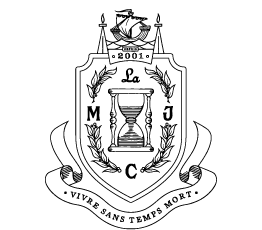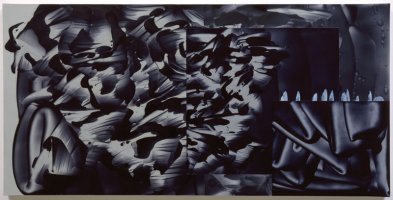David Reed is an abstract painter respected worldwide, especially in New York. Since the early 70’s his work has influenced there several generations of artists and continues to intrigue the youngest painters today. You just have to attend an opening of one of his exhibition at
his gallery Max Protetch in New York to realize that his paintings draw a very large audience, students of art schools mix with old collectors. A video filmed by James Kalm at the opening of his latest show at Protetch late 2007 can be seen
here.
The paintings of David Reed are mostly done in big horizontal or vertical format. Since his debut he has been influenced by movies, we discover well this influence in those big panoramics which can not be grasped in one glance, the spectator has to move along them in order to see them in detail, like the travelling of a camera.

Those last years his paintings are constructed around a central motif, sinuous forms that remind of folds, waves, ribbons, flowers or whatever you want to see in them. And that is precisely in this generic motif that lays the interest of his painting. Those sinuous forms could be the symbols of so many different elements that they end up being emptied of all meaning. They become pure images from which the spectator could draw his own meaning, his own interpretation. This meditative aspect is reinforced by the process of creation of the paintings. The backgrounds are prepared in plain coloured stripes, usually vivid and later they are sanded. Then the sinuous motifs are painted and the surface is again sanded. Those operations of painting and sanding are repeated many times before the work is finished and the artist satisfied. This process is slow (it can take months, sometimes years), complex and tiring, in total contradiction with the feeling that those paintings create: a feeling of rhythmic movement, easiness and lightness. This contradiction is probably the principal reason of the fascination David Reed’s paintings exert on their public. The more their surface is slick , i.e. the trace of the hand of the artist is erased, the more the spectator appropriates them, the more he enters them. Something tells us that we shouldn’t trust our eyes, that those paintings are much more complex than it seems, they are just an illusion.

The paintings of David Reed have never been more relevant than today. In this world of media and appearances,
it’s often under the surface that lays the true meaning.
A book of drawings of David Reed has just been published by Snoeck.
He’s represented in Paris by the gallery Xippas.
All paintings: oil and alkyd on linen or polyester.
















